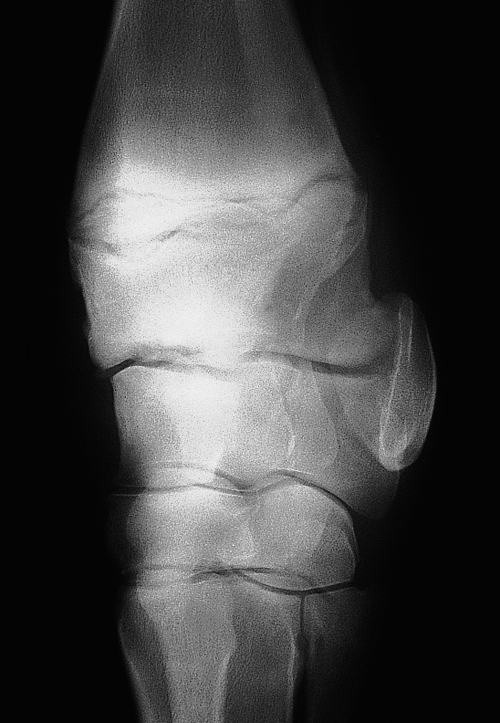Difference between revisions of "Equine Orthopaedics and Rheumatology Q&A 14"
Jump to navigation
Jump to search
| Line 17: | Line 17: | ||
The most appropriate treatment is arthroscopic evaluation of the joint. <br> | The most appropriate treatment is arthroscopic evaluation of the joint. <br> | ||
The diagnosis of osteochondritis dissecans, involving a large area of the medial aspect of the distal radius, was confirmed. The defect was debrided. | The diagnosis of osteochondritis dissecans, involving a large area of the medial aspect of the distal radius, was confirmed. The defect was debrided. | ||
| − | |l2= | + | |l2=Osteochondrosis |
|q3=What is your prognosis? | |q3=What is your prognosis? | ||
|a3= The prognosis in these cases is always guarded to poor. In a limited series of cases seen by the contributor, some degree of lameness has persisted associated with continued fragmentation of the distal radius. | |a3= The prognosis in these cases is always guarded to poor. In a limited series of cases seen by the contributor, some degree of lameness has persisted associated with continued fragmentation of the distal radius. | ||
Latest revision as of 19:40, 8 July 2011
| This question was provided by Manson Publishing as part of the OVAL Project. See more Equine Orthopaedic and Rheumatological questions |
A six-month old Thoroughbred foal presented with lameness of the right carpus associated with effusion of the right antebrachiocarpal joint. The dorsolateral-palmaromedial oblique radiograph of this area is illustrated.
| Question | Answer | Article | |
| What is your diagnosis? | There is subchondral lucency of the distal radius. In a horse of this age the most likely diagnosis is osteochondritis dissecans.
|
Link to Article | |
| How should this case be treated? | The most appropriate treatment is arthroscopic evaluation of the joint. |
Link to Article | |
| What is your prognosis? | The prognosis in these cases is always guarded to poor. In a limited series of cases seen by the contributor, some degree of lameness has persisted associated with continued fragmentation of the distal radius.
|
Link to Article | |
